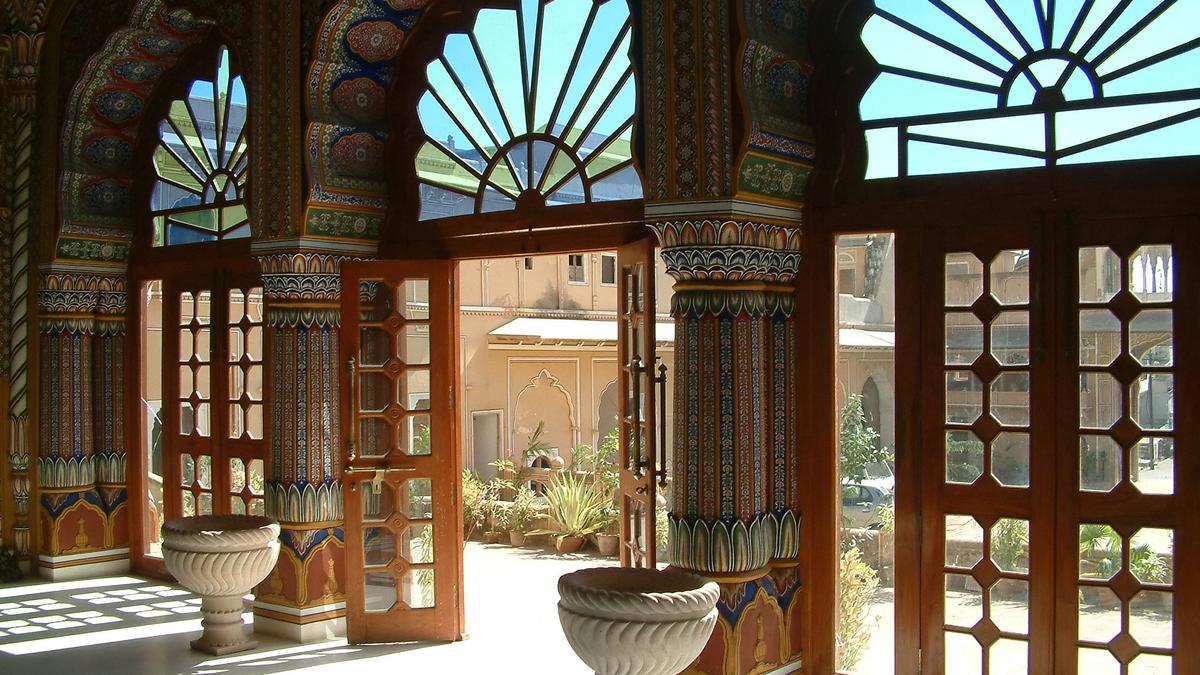One of the striking features of the wedding is the passion with which the Ambani family is following the Gujarati traditions.Siblings in Indian weddings play pivotal roles, offering emotional support, organizing festivities, and upholding cultural traditions. They assist in rituals like Haldi and sangeet ceremonies, ensuring smooth coordination and joyful participation. Siblings often contribute to the wedding’s vibrant atmosphere through performances, decorations, and heartfelt gestures, fostering unity and celebrating family bonds. Their presence not only enriches the ceremonial aspects but also strengthens familial ties, making weddings a memorable and cherished occasion for all involved.
Here are a few traditions of a typical Gujarati wedding where siblings have a key role:
Varghoda
In a Gujarati wedding, the ritual where the groom’s sister waves coins wrapped in a cloth over his head holds deep cultural and symbolic significance. Known as “Akshat,” this ritual is performed to ward off the “evil eye” and bless the groom with prosperity and protection as he embarks on his journey to the bride’s home. The coins symbolize wealth and good fortune, and by waving them over her brother’s head, the sister invokes blessings from the deities for his safe and prosperous future.
(Image: AP)
The act of waving the cloth with coins also signifies the sister’s protective role and her heartfelt wishes for her brother’s happiness in his married life. It is a poignant moment of familial love and support, reinforcing the bond between siblings amidst the joyous festivities of the wedding day.
Following this ritual, the groom traditionally leaves for his baaraat, the procession to the bride’s house, often riding a decorated horse. This departure symbolizes his readiness to embark on a new chapter of life with his bride, surrounded by the blessings and good wishes bestowed upon him by his family, particularly his sister.
Juta Churai
“Juta Churai” is a playful and traditional ritual commonly observed in Indian weddings, including Gujarati ceremonies, where the bride’s sisters and female relatives play a fun role. Translating to “shoe stealing,” this lighthearted custom occurs during the wedding reception or when the groom arrives at the bride’s home.
In this ritual, the sisters and female relatives of the bride playfully steal the groom’s shoes while he is distracted or during specific moments of the wedding festivities. The groom, in turn, must negotiate with them or offer gifts (usually money or sweets) to retrieve his shoes. It’s a jovial exchange that adds an element of humor and camaraderie to the wedding celebrations.
(Image: AP)
Beyond its entertainment value, “Juta Churai” symbolizes the bond between the groom and his new sisters-in-law. It fosters goodwill and serves as an icebreaker between the two families, creating joyful memories and strengthening familial ties. The groom’s participation in this playful tradition reflects his acceptance into the bride’s family and his willingness to engage in their customs and traditions with enthusiasm and respect.
Sangeet ceremony
Sangeet is one of the most amazing parts of Gujarati weddings. Siblings often take charge of organizing the sangeet ceremony, from selecting the venue and coordinating with performers to planning the sequence of performances. They ensure that the event runs smoothly and reflects the cultural traditions and preferences of the families involved.
Siblings, especially younger ones, frequently participate in choreographing dance performances for the bride, groom, and their respective families. They may also perform solo or group dances themselves, showcasing their talent and adding to the festive atmosphere.
Siblings uphold cultural traditions by incorporating traditional songs, dances (such as garba and raas), and rituals into the sangeet ceremony. They pass down these customs to younger family members, ensuring that heritage is preserved and celebrated.
Pithi or haldi ceremony
In Indian weddings, the Haldi ceremony holds a special place as a traditional pre-wedding ritual filled with symbolism and joy. Siblings play crucial roles throughout this auspicious event, contributing to its seamless execution and heartfelt significance.
Siblings are actively involved in the preparation and arrangement of the Haldi ceremony. They assist in making the Haldi paste, a mixture of turmeric, sandalwood, and other auspicious ingredients believed to cleanse and purify the bride or groom before their wedding day. This preparation often involves meticulous attention to detail, ensuring everything is ready for the ceremonial application.
During the ceremony itself, siblings play a central role in applying the Haldi paste to the bride or groom. This act is not only a traditional ritual but also a symbol of love and blessings from their closest family members. Siblings carefully adorn the couple’s face, hands, and feet with Haldi, creating a vibrant and joyous atmosphere filled with laughter and heartfelt sentiments.
Source Homevior.in




